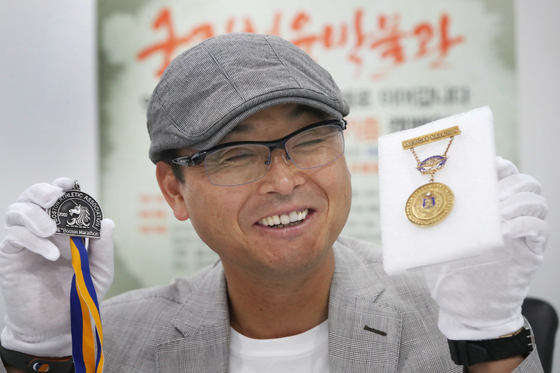National marathoner Lee Bong-ju recently appeared on an entertainment program at a broadcasting company and suffered from dystonia, which is drawing attention to the disease.
Muscular dystonia refers to a disease in which the muscle tensions and contracts by itself regardless of the will due to a problem in the command system transmitted from the nerves of the brain to the muscle. Professor Huh Ryung of the Department of Neurosurgery, Incheon St. Mary’s Hospital, the Catholic University of Korea, said, “The muscles become hypertonic, which causes the muscles to move differently from their intentions and abnormal posture. Regardless, there is a systemic nature that can cause symptoms similar to those of a sobbing disease), and there is a locality that occurs in a specific area.”

‘National Marathoner’ Lee Bong-ju. Central photo
It can occur anywhere with muscles such as arms, legs, face, or neck. When it appears in the neck area, it is called a’sacrifice’, and the main symptoms are head torsion, convulsion, head trembling, and neck pain. Professor Huh said, “When it comes to the eye area, it is called’eyelid spasm’, so the eyes keep closing regardless of their will. When it spreads under the face to the mouth, it is called’Meiji syndrome’. It can also come to the muscles of the arms and legs, and rarely appears on the muscles of the lower back.”
It is also experienced by musicians, writers, and athletes who use a lot of specific muscles. Professor Huh said, “Sometimes a musician cannot move a certain finger or a writer cannot write. It comes with workability.” Singer Jang Jae-in was also diagnosed with this diagnosis in the past and stopped her activities. Even in the case of Lee Bong-ju, the exact cause is not known, but “it may have been paradoxically caused by a lot of stimulation while running for a long time.” did. Lee Bong-ju appeared on the air with his back bent.
Muscular dystonia does not have an exact pattern of how symptoms change. Professor Huh said, “It usually appears from 6 months to a year, but sometimes it just gets better naturally, and sometimes it comes in very badly and then stays in a weakening state. There are cases where it comes weaker and then gets worse,” he said.
There is no cause for criticism. Professor Heo said, “There are many cases of stress, and it is also caused by head trauma,” he said. “There is also a secondary nature that comes in patients with cerebral palsy, but there is no exact cause that comes as a primary person.” It doesn’t just happen to certain age groups. According to the Health Insurance Review and Assessment Service, the number of patients treated for this disease is estimated to be about 39731 as of 2019.
There are no special signs of symptoms, but in case of tortocisoria, you may feel pain and stiffness in your neck. Suddenly the throat turns. If you don’t want to look in a specific direction, or if your movements are strange, such as closing your eyes, you can be suspicious. Professor Heo said, “There are patients who come to the hospital because they think it is a stroke, or because they think it is because of a bad disc, and they look for it.”
If you receive treatment in time, you can see the effect. In the early days when symptoms are not severe, medications or Botox injections that block muscle nerves are used. Prof. Heo explained, “In the case of topical botox injections into the muscles, the effect is good, but if repeatedly beaten, the effect may be reduced due to the formation of antibodies.” In deep brain stimulation, a micro medical device is inserted into the brain and electrical stimulation is applied to a specific area. Professor Heo emphasized, “This disease is one of the diseases that greatly degrades the quality of life of the patient. In severe cases, it can lead to extreme popularity and depression, so it is important to undergo proper diagnosis and treatment.”
Reporter Hwang Soo-yeon [email protected]
![]()
